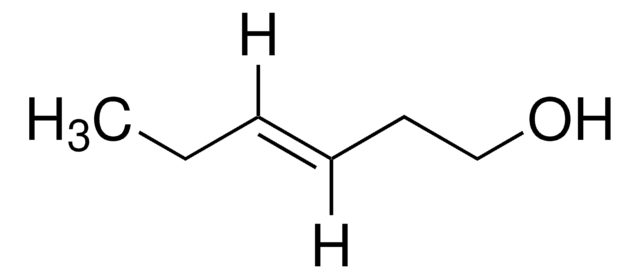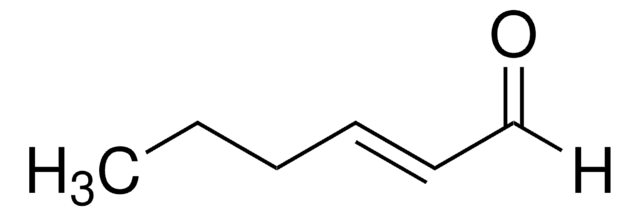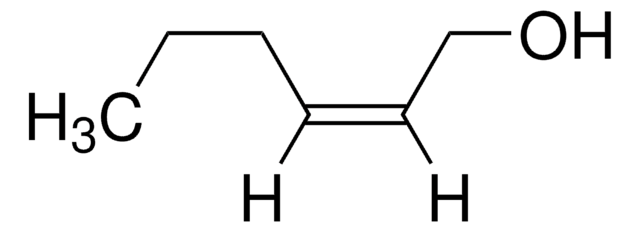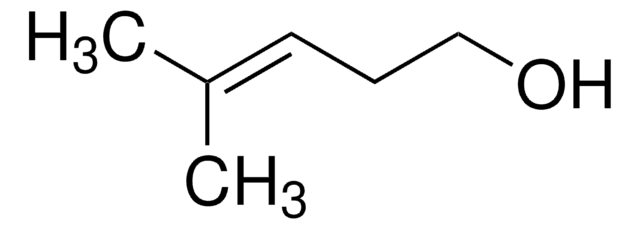224715
trans-3-Hexen-1-ol
97%
Synonym(e):
trans-3-Hexenol
About This Item
Empfohlene Produkte
Qualitätsniveau
Assay
97%
Brechungsindex
n20/D 1.439 (lit.)
bp
61-62 °C/12 mmHg (lit.)
Dichte
0.817 g/mL at 25 °C (lit.)
Funktionelle Gruppe
hydroxyl
SMILES String
[H]\C(CC)=C(\[H])CCO
InChI
1S/C6H12O/c1-2-3-4-5-6-7/h3-4,7H,2,5-6H2,1H3/b4-3+
InChIKey
UFLHIIWVXFIJGU-ONEGZZNKSA-N
Suchen Sie nach ähnlichen Produkten? Aufrufen Leitfaden zum Produktvergleich
Verwandte Kategorien
Allgemeine Beschreibung
Signalwort
Warning
H-Sätze
P-Sätze
Gefahreneinstufungen
Eye Irrit. 2 - Flam. Liq. 3
Lagerklassenschlüssel
3 - Flammable liquids
WGK
WGK 3
Flammpunkt (°F)
138.2 °F - closed cup
Flammpunkt (°C)
59 °C - closed cup
Persönliche Schutzausrüstung
Eyeshields, Gloves, type ABEK (EN14387) respirator filter
Hier finden Sie alle aktuellen Versionen:
Besitzen Sie dieses Produkt bereits?
In der Dokumentenbibliothek finden Sie die Dokumentation zu den Produkten, die Sie kürzlich erworben haben.
Kunden haben sich ebenfalls angesehen
Unser Team von Wissenschaftlern verfügt über Erfahrung in allen Forschungsbereichen einschließlich Life Science, Materialwissenschaften, chemischer Synthese, Chromatographie, Analytik und vielen mehr..
Setzen Sie sich mit dem technischen Dienst in Verbindung.















